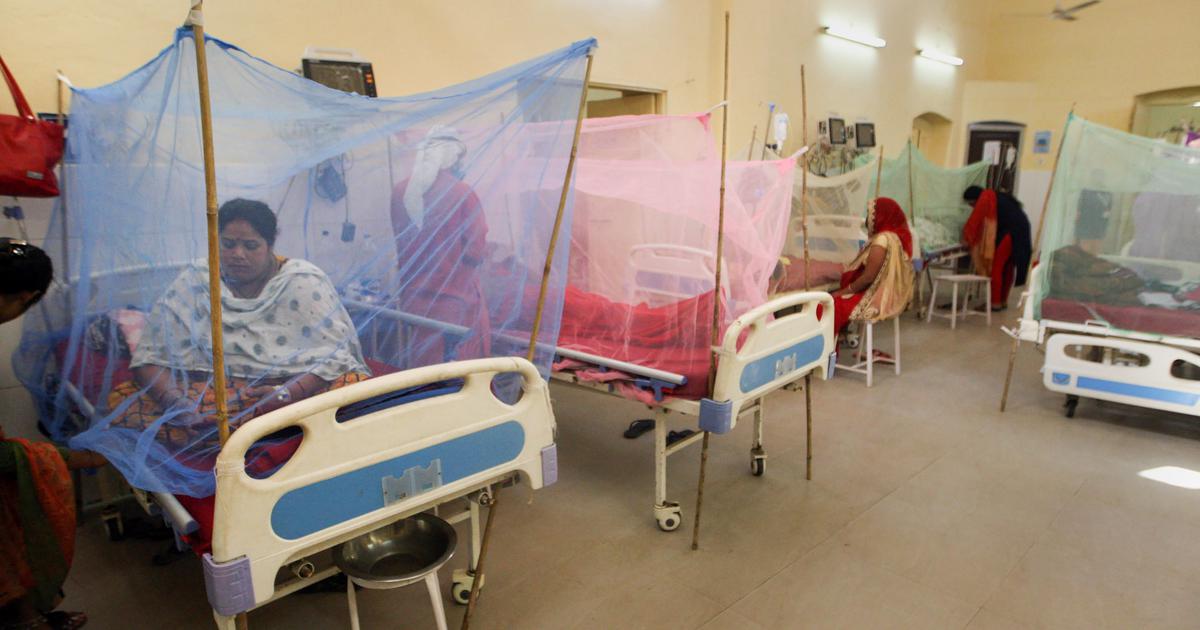HMPV cases surge in China; authorities monitoring respiratory infections

BEIJING: The number of cases of human metapneumovirus (HMPV), a respiratory virus causing flu-like symptoms, has been steadily rising in China, prompting the country’s disease control authority to monitor the situation closely. The virus, which can lead to pneumonia in severe cases, is spreading rapidly, with authorities warning that respiratory illnesses are expected to increase as the winter season progresses.
HMPV, typically associated with symptoms resembling the common cold or influenza, has raised alarms in several regions of China, with reports of hospitals being overwhelmed by patients suffering from flu-like symptoms. Video footage circulating on social media showed crowded hospitals as the virus spread throughout the population.
The rise in HMPV cases follows just five years after the COVID-19 pandemic, which has led to increased vigilance over respiratory infections in China. However, China’s foreign ministry spokesperson, Mao Ning, reassured the public last week, stating that respiratory infections often peak during the winter months. She further noted that the diseases this year appeared to be less severe and spread on a smaller scale compared to the previous year.
“Respiratory infections tend to peak during the winter season,” Mao said. “The diseases appear to be less severe and spread on a smaller scale compared with the previous year. I can assure you that the Chinese government cares about the health of Chinese citizens and foreigners in China.”
What is HMPV?
Human Metapneumovirus (HMPV) is a respiratory virus that shares symptoms with the common cold and influenza. Although most cases are mild, HMPV can cause severe complications like pneumonia, particularly in high-risk groups such as infants, the elderly, and those with weakened immune systems.
Symptoms and Transmission
Symptoms of HMPV typically appear 3 to 6 days after exposure and include cough, fever, nasal congestion, sore throat, and shortness of breath. In severe cases, individuals may require hospitalisation.
The virus spreads primarily through direct contact with an infected person, including through coughing, sneezing, or touching contaminated surfaces. Shaking hands with an infected person can also facilitate transmission.
Severity and Risk Groups
For most individuals, HMPV presents as a mild illness, and most people recover at home within a few days. However, the virus can be more severe for young children, adults over the age of 65, and those with compromised immune systems. The first infection with HMPV is more likely to cause severe illness, which is why children are at greater risk. Subsequent infections tend to cause milder, cold-like symptoms due to the partial immunity gained after the first exposure.
Global Spread and Response
Following China, neighbouring Malaysia has also experienced a notable surge in HMPV cases in recent months. Health authorities in both countries are working to manage the outbreak and prevent further spread of the virus.

United States Imposed New Sanctions on Russia, Says Trump
The United States has imposed new sanctions on Russia to pressure President Vladimir Putin to end the war in Ukraine.…
Israel Passes Bill to Annex Occupied West Bank Territory
The Israeli parliament has given initial approval to a controversial and illegal bill to annex the occupied West Bank. This…
PAF Chief Visits Romania to Boost Defence Ties
Rawalpindi: During an official visit to Romania, Air Chief Marshal Zaheer Ahmed Baber Sidhu, Chief of the Air Staff of…
“Iran Is the True Face of Terrorism, But the Door to Friendship Remains Open”
Washington — The White House has strongly reacted to remarks made by Iran’s Supreme Leader Ayatollah Ali Khamenei, who recently…

Rapid increase in HIV cases among children in Nawabshah
A serious health concern has come to light in Sindh, as officials have reported a rapid increase in HIV cases…
Dengue and Malaria Cases Continue to Rise in Interior Sindh
Dengue and malaria continue to spread rapidly across Hyderabad and several districts of interior Sindh, as hospitals remain flooded with…
An incident of violence against polio workers in Karachi
An incident of violence against polio workers in Karachi took place in FB Area Block 14, Goharabad. A team giving…
258 Prisoners in Balochistan Jails Suffer from TB, AIDS, and Hepatitis
A recent health report has revealed that 258 prisoners in Balochistan jails are suffering from TB, AIDS, and Hepatitis. These…

United States Imposed New Sanctions on Russia, Says Trump
The United States has imposed new sanctions on Russia to…2 hours ago
Maryam Nawaz Launches Free Flight Card for Skilled Youth
The Punjab government has taken an important step to boost…2 hours ago
Israel Passes Bill to Annex Occupied West Bank Territory
The Israeli parliament has given initial approval to a controversial…4 hours ago
Ex-Ministers in KP Still Hold Onto Government Vehicles
Many official vehicles are still in the possession of former…4 hours ago
















